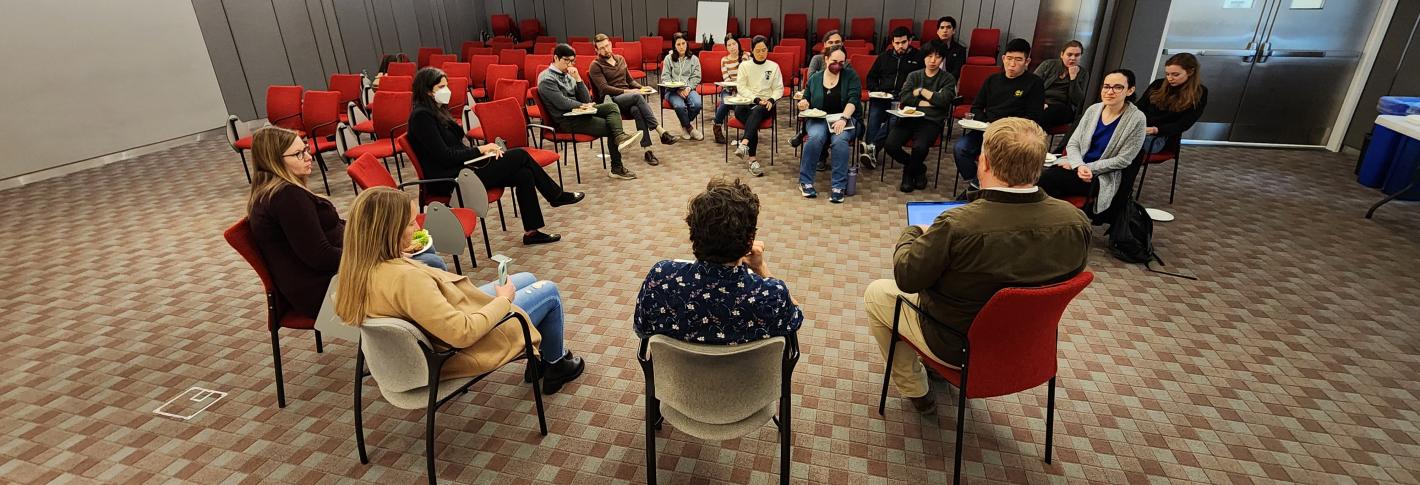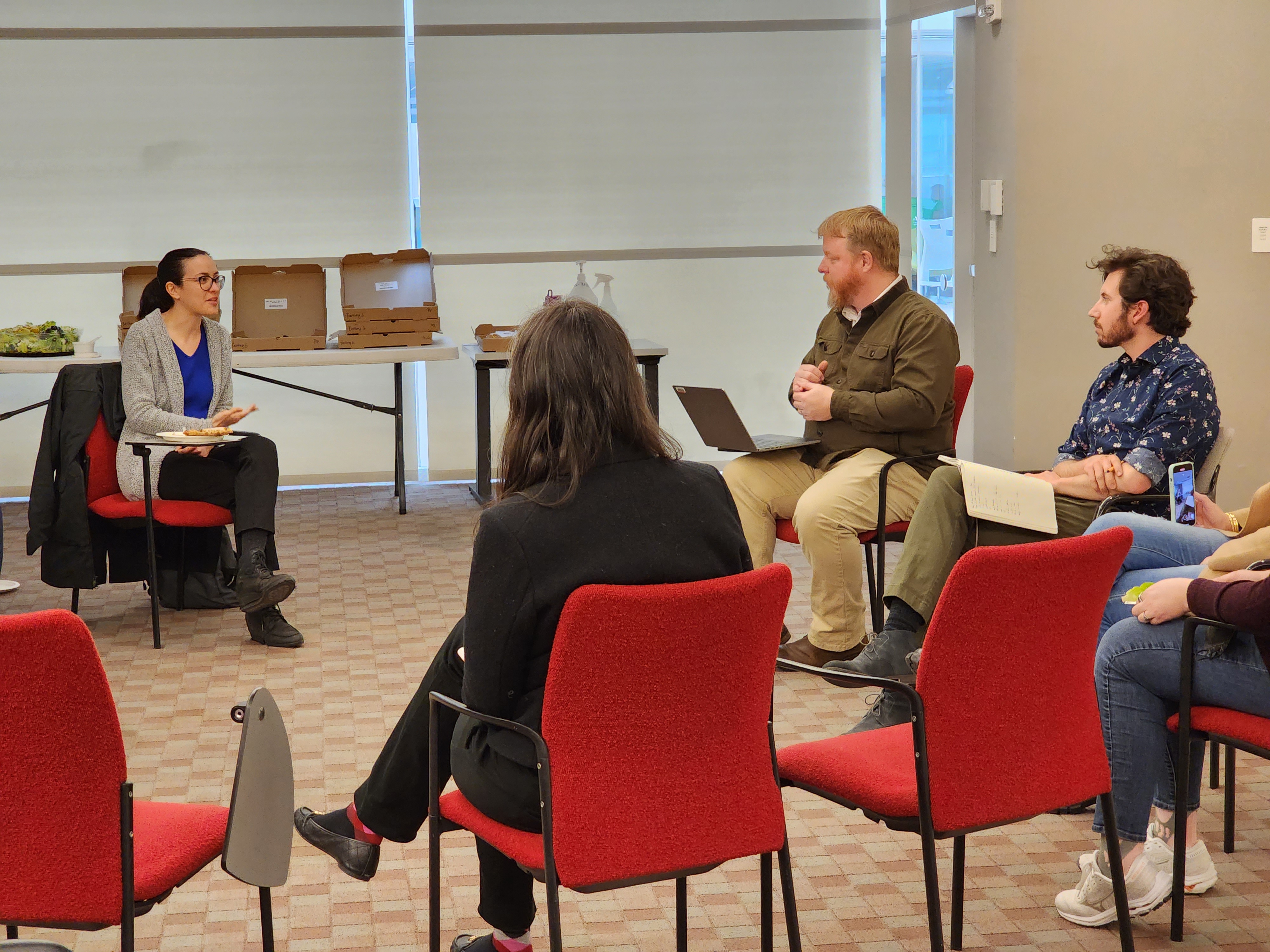
Every day Picower Institute researchers work to advance understanding of how tens of billions of interconnecting and interacting cells produce memory, behavior, consciousness, perception, cognition, feelings and more. Just as a matter of interrogating nature, neuroscience is complex and consequential. But on Feb. 6, more than a dozen Picower postdoctoral and graduate fellows took time to discuss how neuroscience interconnects and interacts with the broader society it serves. Their reflections made it clear the social impact of brain research is complex and consequential, too.
Over the course of the 90-minute dialogue the fellows voiced questions and concerns ranging from the high price of neurological treatments resulting from research, to a need to help the public better understand the value of fundamental research when it may at first seem abstract or rarefied. They articulated a desire to help the public prepare for the potentially disruptive impacts of discoveries when that can be predicted, even as they noted that curiosity-driven science often doesn’t have a predictable outcome. They voiced the importance of analyzing data properly to ensure that published conclusions are valid and advocated for making research data meaningfully available to the taxpayers who’ve footed the bill. They emphasized that the benefits of education, discovery and clinical care should be accessible not just to the privileged but equitably across society.
Facilitated by members of the MIT Museum staff, the dialogue was part of a five-month project at MIT to develop a vision for a new Center for Neuroscience & Society. With a planning grant from the Dana Foundation, the museum is producing a proposal for bringing neuroscientists together with scholars of ethical, legal and social implications of science. The goal is to imagine a center that will help create conditions in which a healthy two-way relationship between neuroscience and society can flourish.
The students and postdocs spent time brainstorming about how to best interact with the public, not only via the recently rebuilt museum, but with outreach that could go beyond its new walls – for instance via podcasts, programs in schools, community events, or by gathering public feedback. They considered not only the medium but also the message: Even as complex research needs to be made accessible to be appreciated, they worried it might become misunderstood if it is oversimplified or overhyped. And they expressed a wariness that outreach will have to play an active role in preventing scientific information from becoming inappropriately politicized or even misused to support hate and violence.
As the discussion made evident, the next generation of neuroscientists is keenly aware that their work matters not just in the lab but also in myriad other societal contexts, and that the public has an essential role in research.


